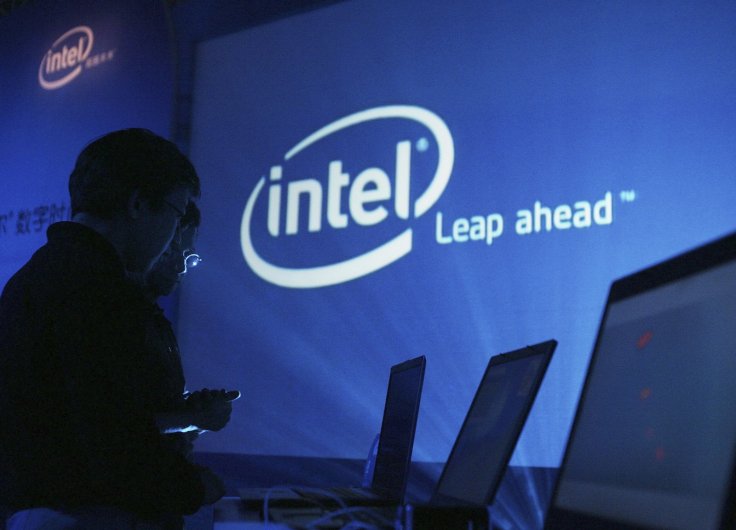Intel Warns that intensifying U.S. involvement in its business could unintentionally dampen international sales and complicate access to future grants, sharpening the tension between national priorities and global market realities in semiconductors. The company’s position frames a pivotal debate for policymakers, investors, and customers: how to scale domestic capacity without sacrificing neutrality and agility in overseas markets. By articulating specific risk factors, Intel Warns that policy design will directly influence competitiveness, procurement dynamics, and long-term investment returns across the chip
Policy backdrop
U.S. industrial policy aims to accelerate onshore manufacturing, strengthen supply resilience, and secure advanced packaging and R&D, yet its instruments matter as much as its intent. Intel Warns that while grants and tax incentives can catalyze capacity, equity stakes or perceived control may trigger reciprocal scrutiny abroad and wariness among multinational buyers. The challenge is to combine domestic rebuilding with credible assurances that commercial decisions remain market-led and globall
Global sales risk
International customers weigh vendor neutrality and regulatory exposure alongside performance and price, especially for data center, AI, and networking platforms. Intel Warns that even modest shifts in perception—around export controls, influence, or compliance friction—can redirect design wins, extend sales cycles, and lock in alternatives over successive product generations. As platforms standardize, small early pivots compound, reshaping regional revenue mix and p
Future grants and funding
Large-scale fabs, packaging, and specialty processes rely on predictable incentives to make multiyear investments viable. Intel Warns that uncertainty around future grants whether due to changing eligibility, political cycles, or governance conditions raises the cost of capital and complicates supplier negotiations and tooling timelines. Clear, time-bound frameworks help preserve momentum, support workforce planning, and redu
Regulatory and legal exposure
Investment screening, foreign subsidy rules, and public procurement regimes in other jurisdictions often intensify when a foreign government assumes a stake in a supplier. Intel Warns that additional reviews, longer approvals, and tighter eligibility for tenders can delay deployments and shift procurement toward vendors perceived as less encumbered. In sectors with long lead times, a single quarter’s delay can reassign design slots and
Investor implications
Equity arrangements and governance terms affect dilution, voting influence, and the market’s view of strategic independence. Intel Warns that murky guardrails can lift perceived political risk, elevate the implied cost of capital, and constrain flexibility on buybacks, M&A, or capex sequencing. Conversely, explicit sunset clauses, ring-fenced rights, and non-interference principles can protect valuation by reinforcing management’s control over roadmaps and
Customer decision calculus
Procurement across cloud, telecom, and enterprise hinges on supply assurance, total cost of ownership, and compliance clarity. Intel Warns that customers operating globally optimize for stability and predictable delivery, especially when export rules or cross-border approvals are involved. Strong service-level commitments, multi region fulfillment, and tested compliance pathways reduce the incentive to diversify away purely to a
Supply chain and partners
Equipment makers, materials suppliers, and EDA partners align their inventories and R&D with expected fab ramps and node transitions. Intel Warns that policy induced variability can propagate through the ecosystem, misaligning deliveries, raising buffer stocks, and inflating costs. Transparent schedules and guardrails allow partners to synchronize investments, keeping cost curves favorable an
Technology roadmaps
Process leadership and product execution ultimately anchor competitiveness, moderating policy noise when performance is clear and reliable. Intel Warns that the risk is not only direct constraints but also second order effects: elongated qualification cycles, incremental legal steps, and delayed designins that gradually erode share. Sustained cadence in nodes, packaging, and platform software can offset perception risks by delivering undeni
Geopolitical feedback loops
Allies and competitors manage their own chip programs, tuning subsidies and market access in response to perceived U.S. policy posture. Intel Warns that moves seen as preferential or restrictive may prompt reciprocal measures, fragmenting standards and complicating cross-border collaboration. Since toolchains, specialty equipment, and materials are globally distributed, interoperability is a competitive asset that policy should r
Governance guardrails
A pragmatic path threads industrial aims with market confidence through structured commitments and disclosures. Intel Warns that defined non interference, ring fenced voting rights, transparent reporting, and divestment timelines can preserve neutrality while enabling domestic investment. Predictable, rules based grants tied to measurable milestones protect incentives without sending adverse signals to in
Operational recommendations
-
Codify neutrality: Formalize decision rights and commercial autonomy to reassure enterprise and government buyers across regions that product and pricing choices remain market driven. Intel Warns that such codification directly supports long-term contracts and public sector eligibility.
-
Harmonize compliance: Offer pre cleared export and data-handling pathways, with documented precedents that reduce legal review time for cross border deployments. Intel Warns that compressing legal cycles can preserve design slots and accelerate installations.
-
Diversify fulfillment: Build redundancy across regions to maintain delivery under varied policy regimes, aligning with multi-source risk strategies increasingly favored by global procurement. Intel Warns that multi region inventory and packaging options buffer disruptions and sustain service levels.
Implications for the semiconductor ecosystem
The industry depends on synchronized timelines, substantial capital, and, moreover, cross‑border collaboration that can turn small delays into outsized shifts in market share. Furthermore, Intel Warns that policy success requires instruments that, first, accelerate domestic capability and, second, keep channels open to the broadest customer base. Consequently, a resilient posture blends homegrown capacity with, likewise, frictionless access to global demand, thereby allowing scale economics to reinforce innovation and price‑performance leadership.
Outlook
Over the next several quarters, therefore, watch for specificity: governance terms, grant criteria, export pathways, and disclosures that, in particular, limit ambiguity. Moreover, Intel Warns that clarity will be the decisive variable shaping investor sentiment, customer commitments, and partner alignment across the supply chain. Consequently, if structure and execution converge, domestic manufacturing can expand without compromising global reach; otherwise, the system risks fragmentation and, furthermore, slower innovation diffusion.
Conclusion
Ultimately, the core message is disciplined balance: accelerate domestic build out, while simultaneously safeguarding neutrality abroad, and, moreover, codify the rules that keep commercial decisions predictable. Consequently, Intel Warns that, without clear guardrails, well‑meant interventions can chill international sales and, in addition, narrow eligibility for future grants, thereby undermining the very objectives policymakers seek to achieve. Therefore, with transparent governance and rules based incentives in place, the industry can scale capacity more quickly, retain global customers more reliably, and, finally, strengthen the entire ecosystem from design to deployment.

















